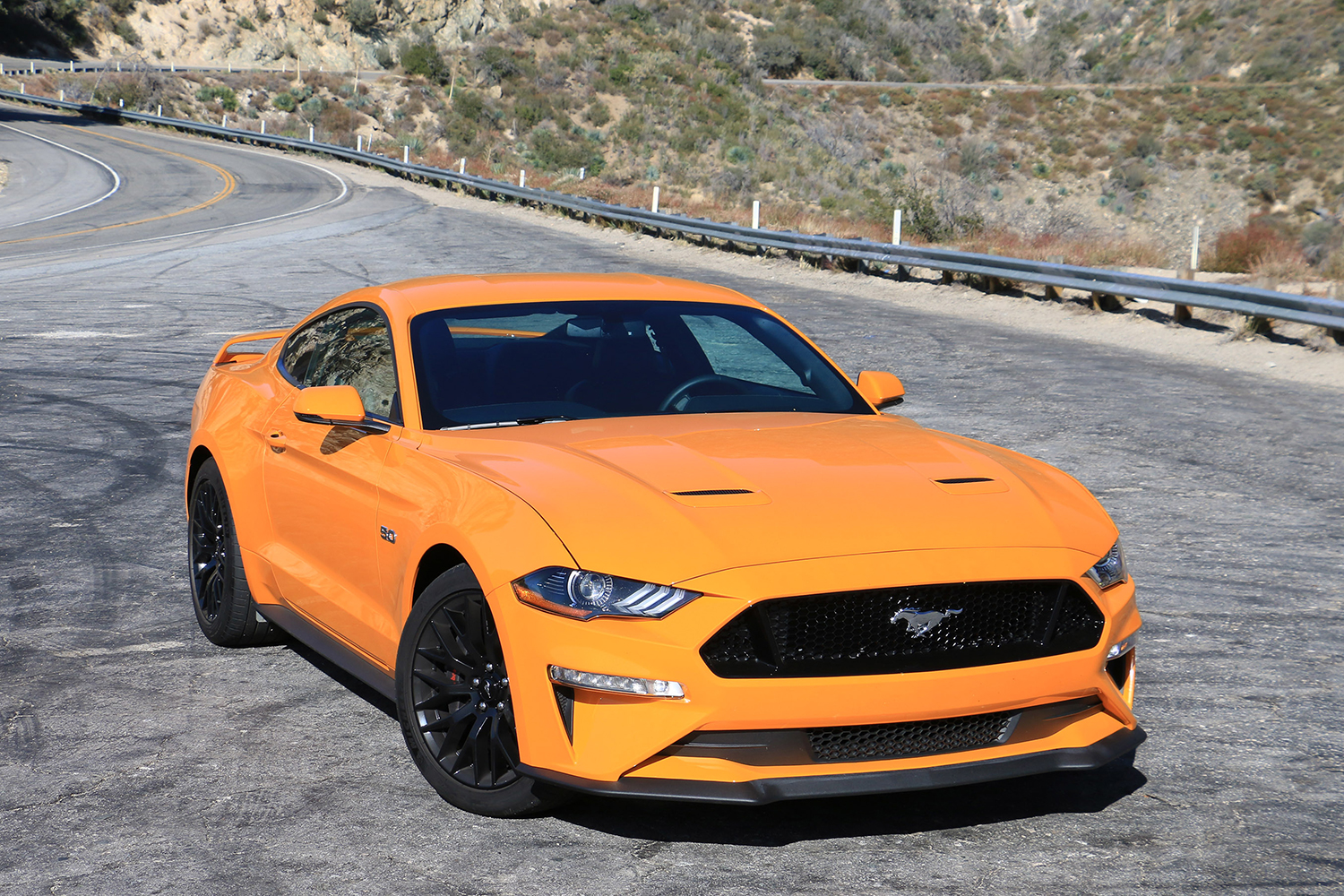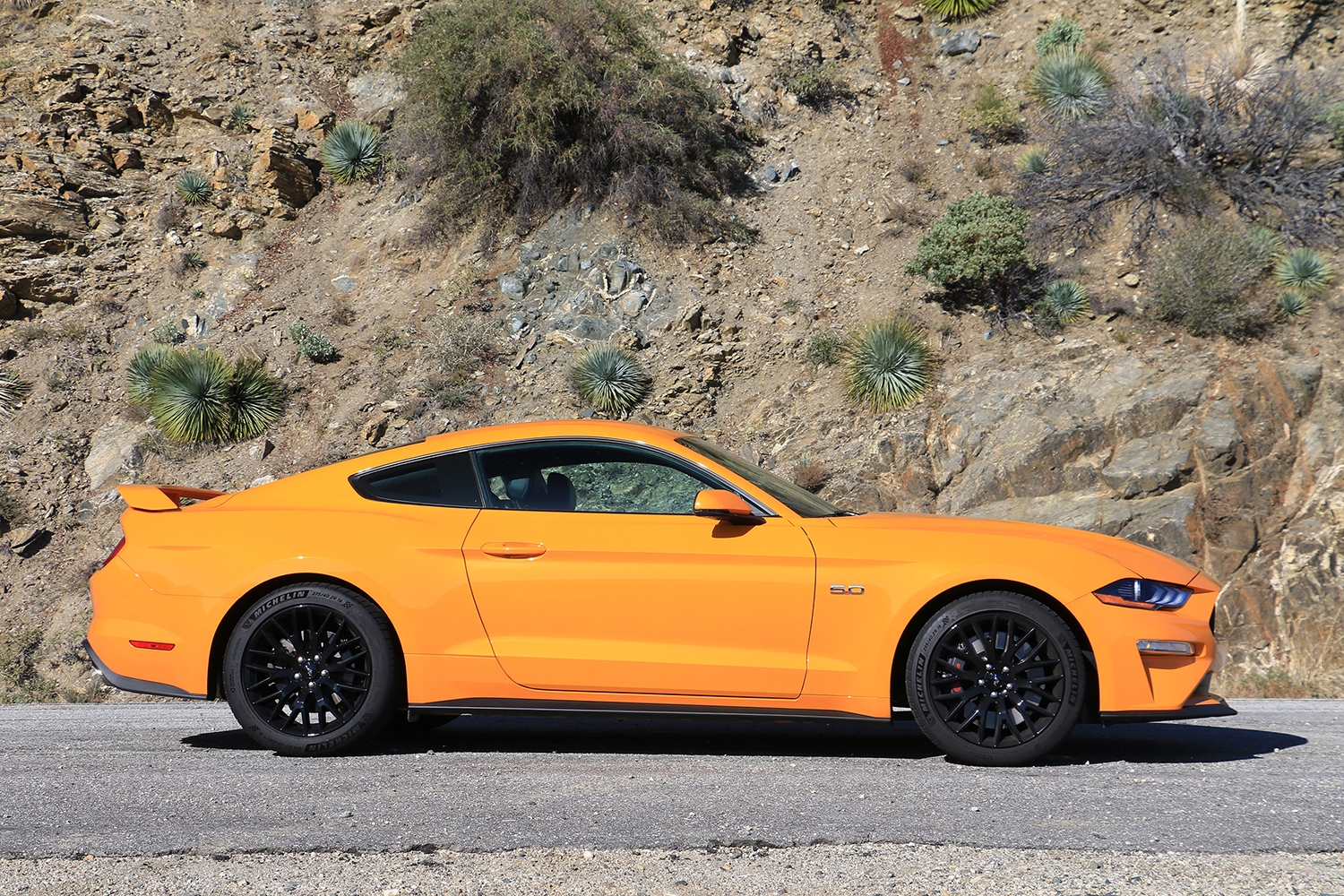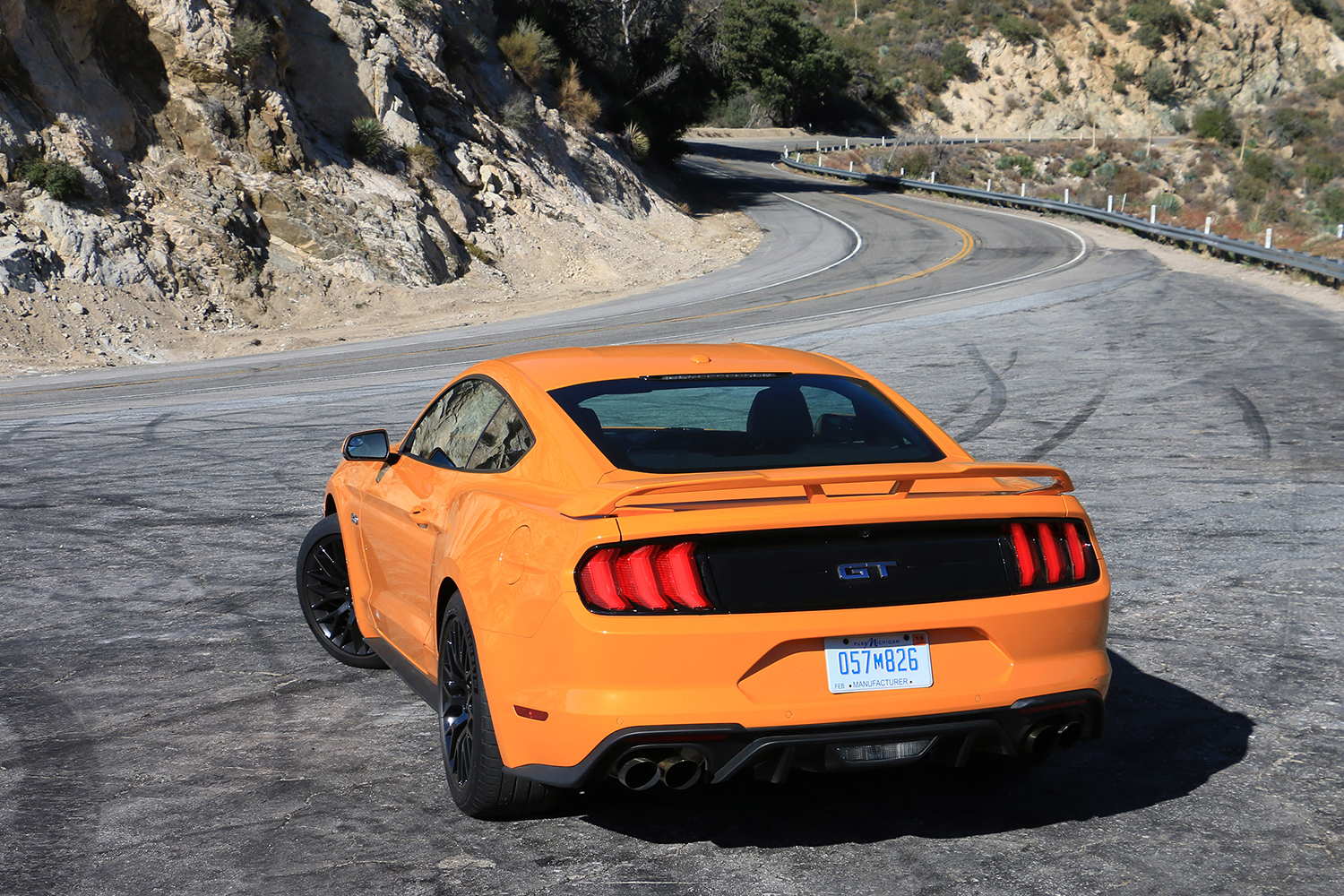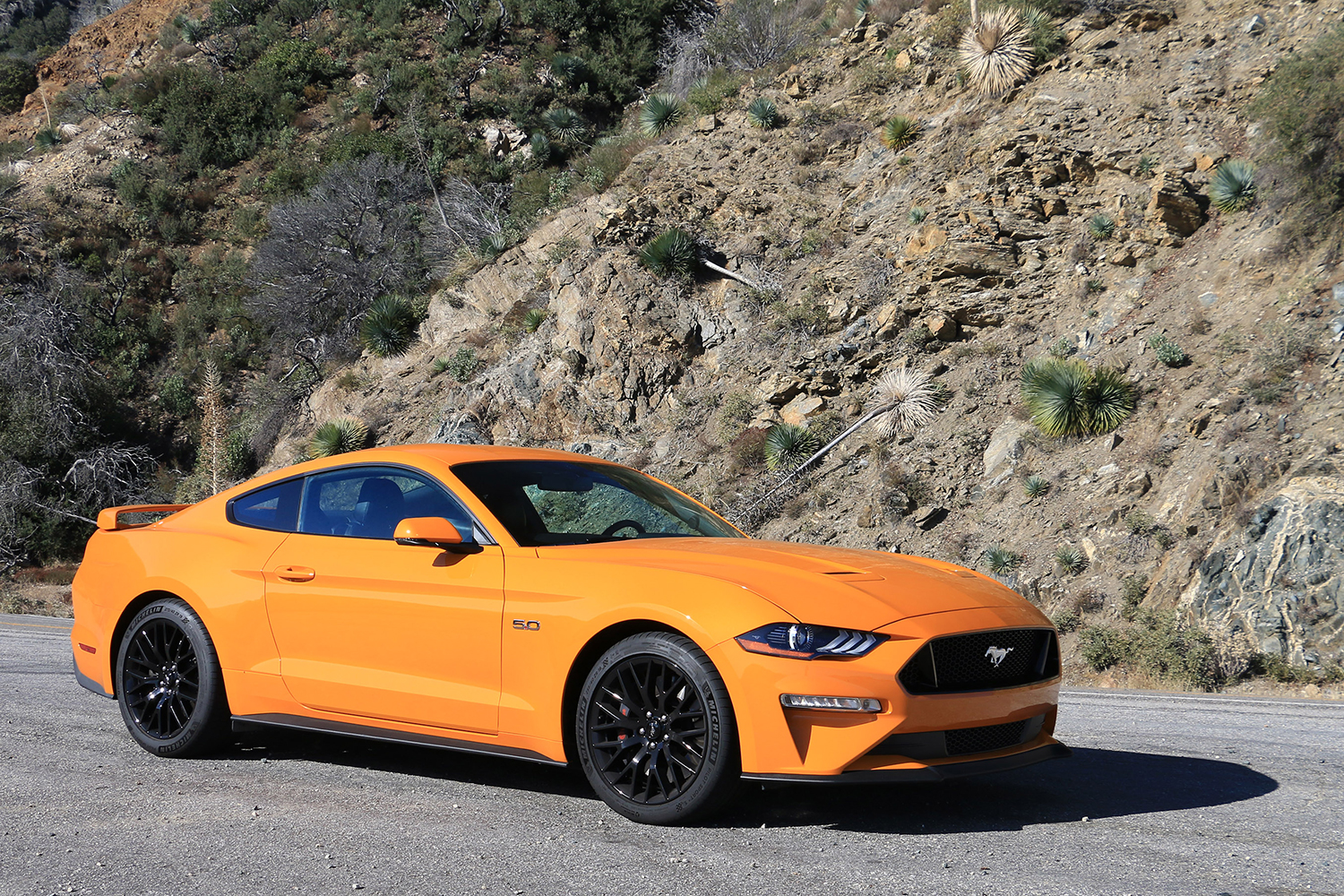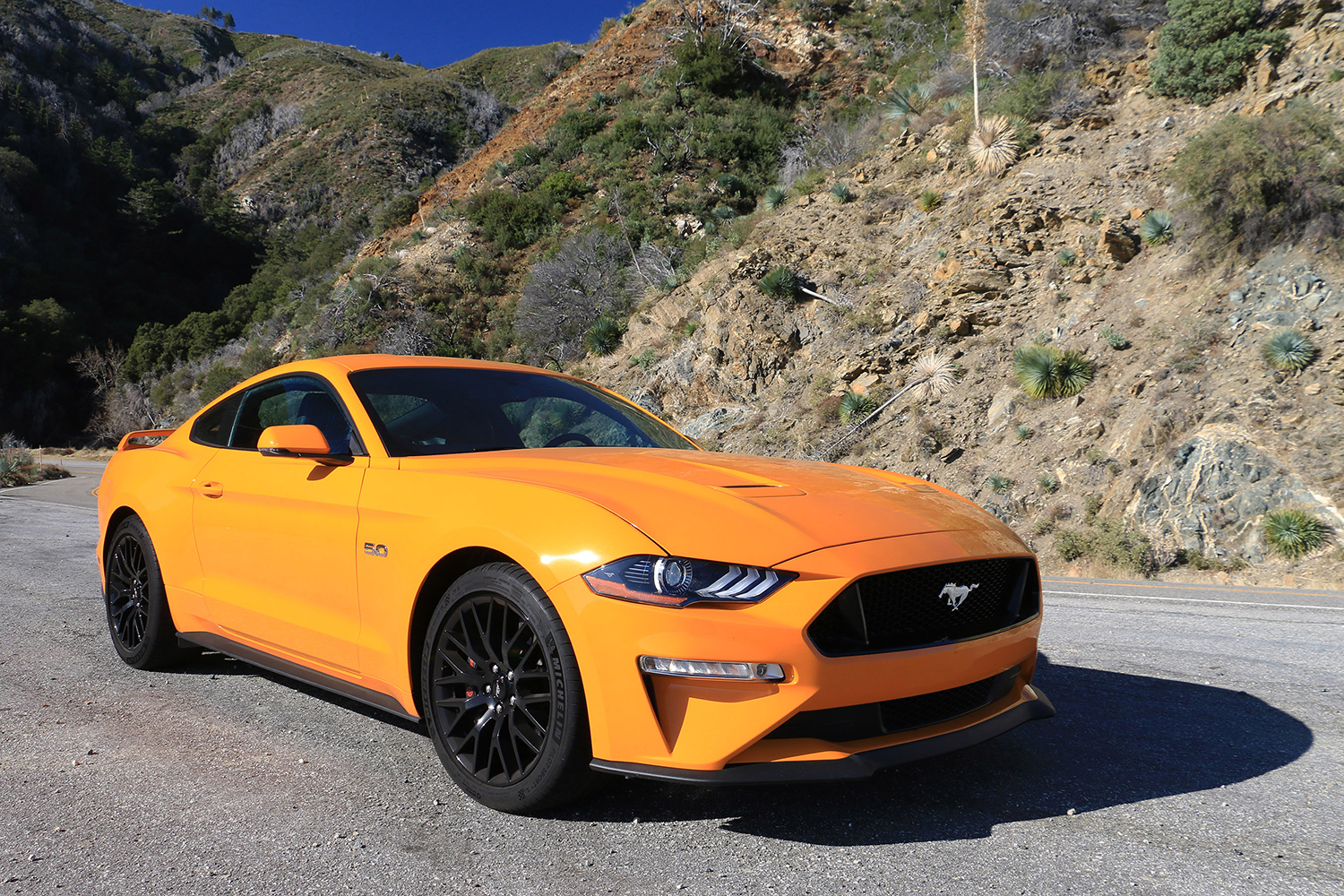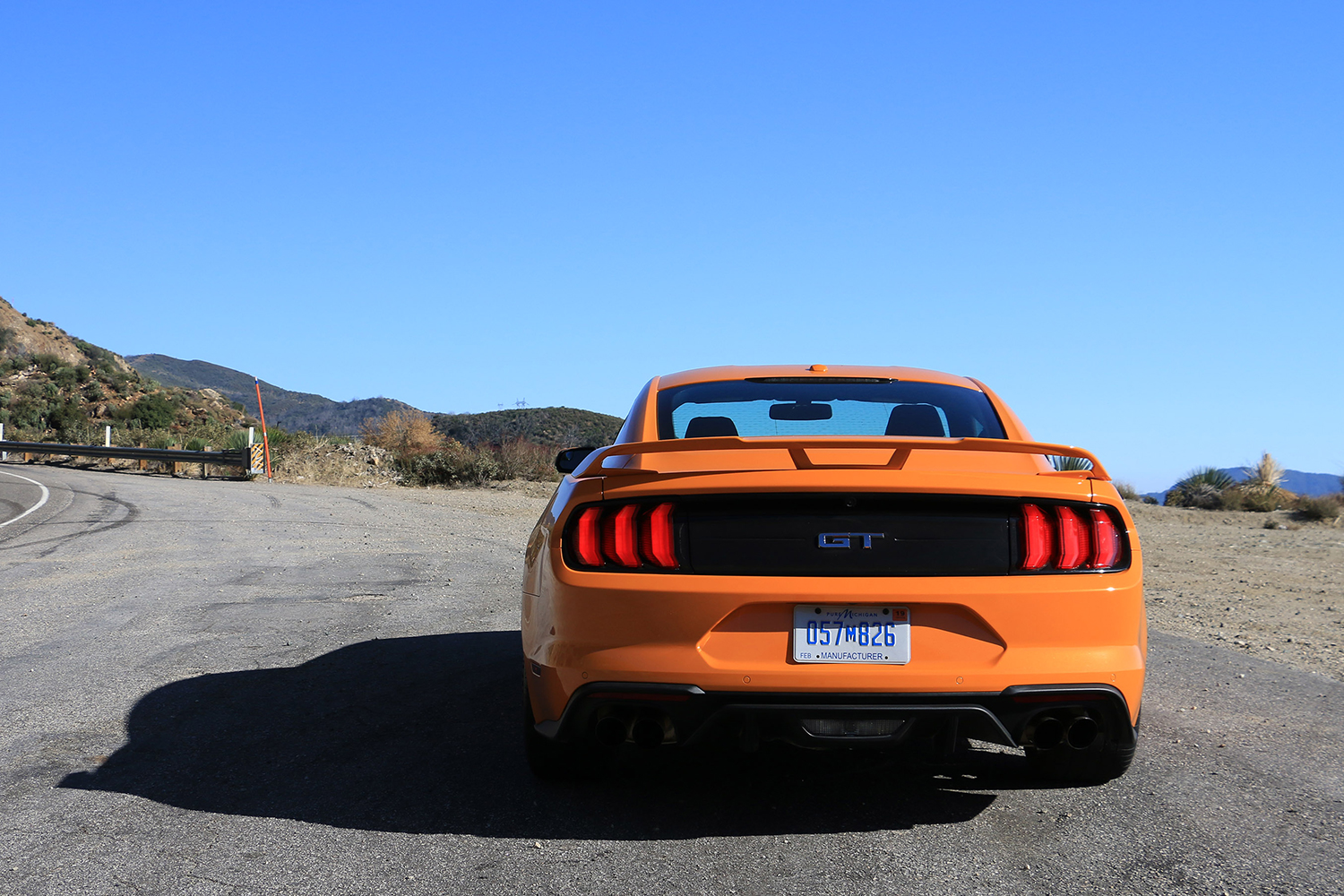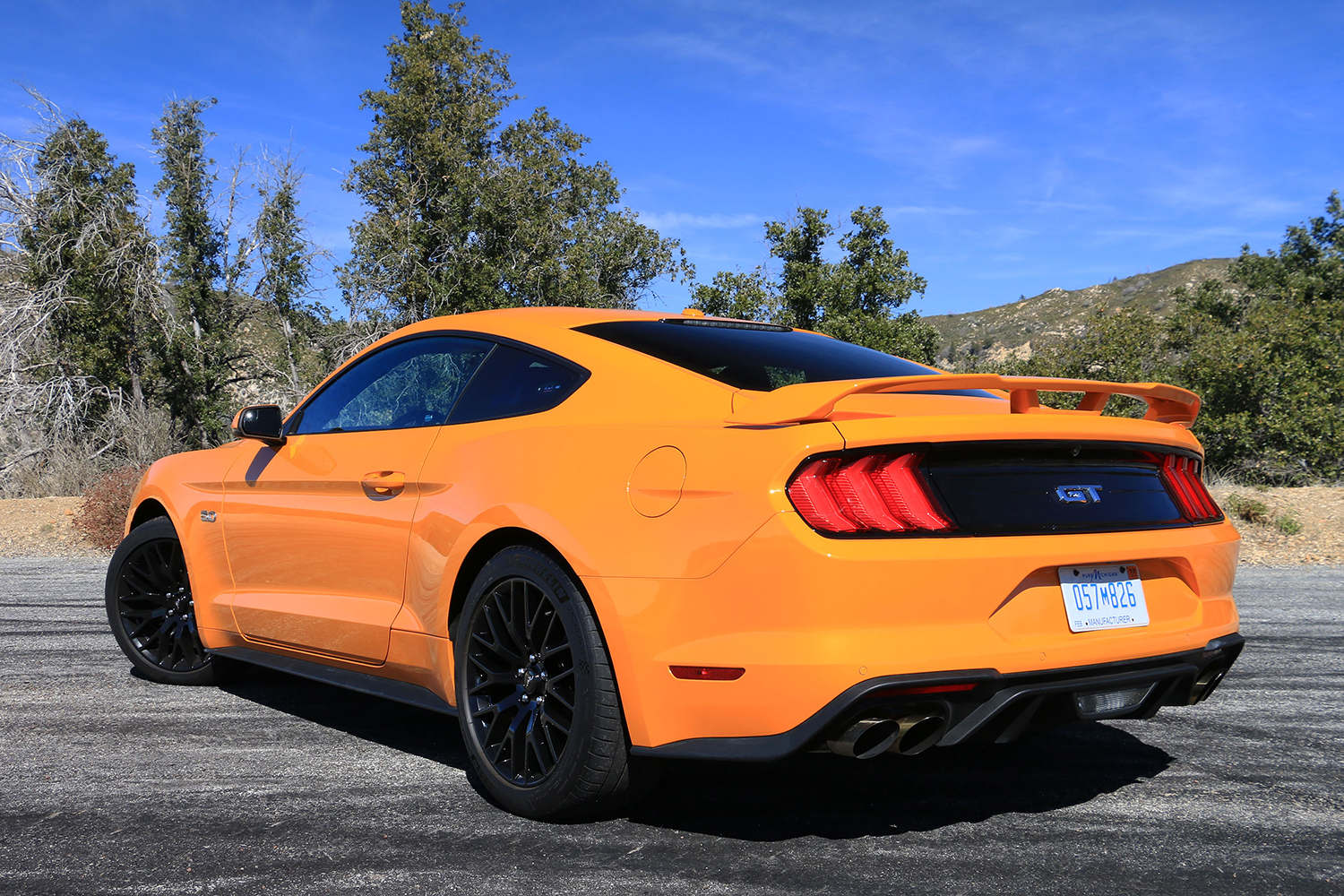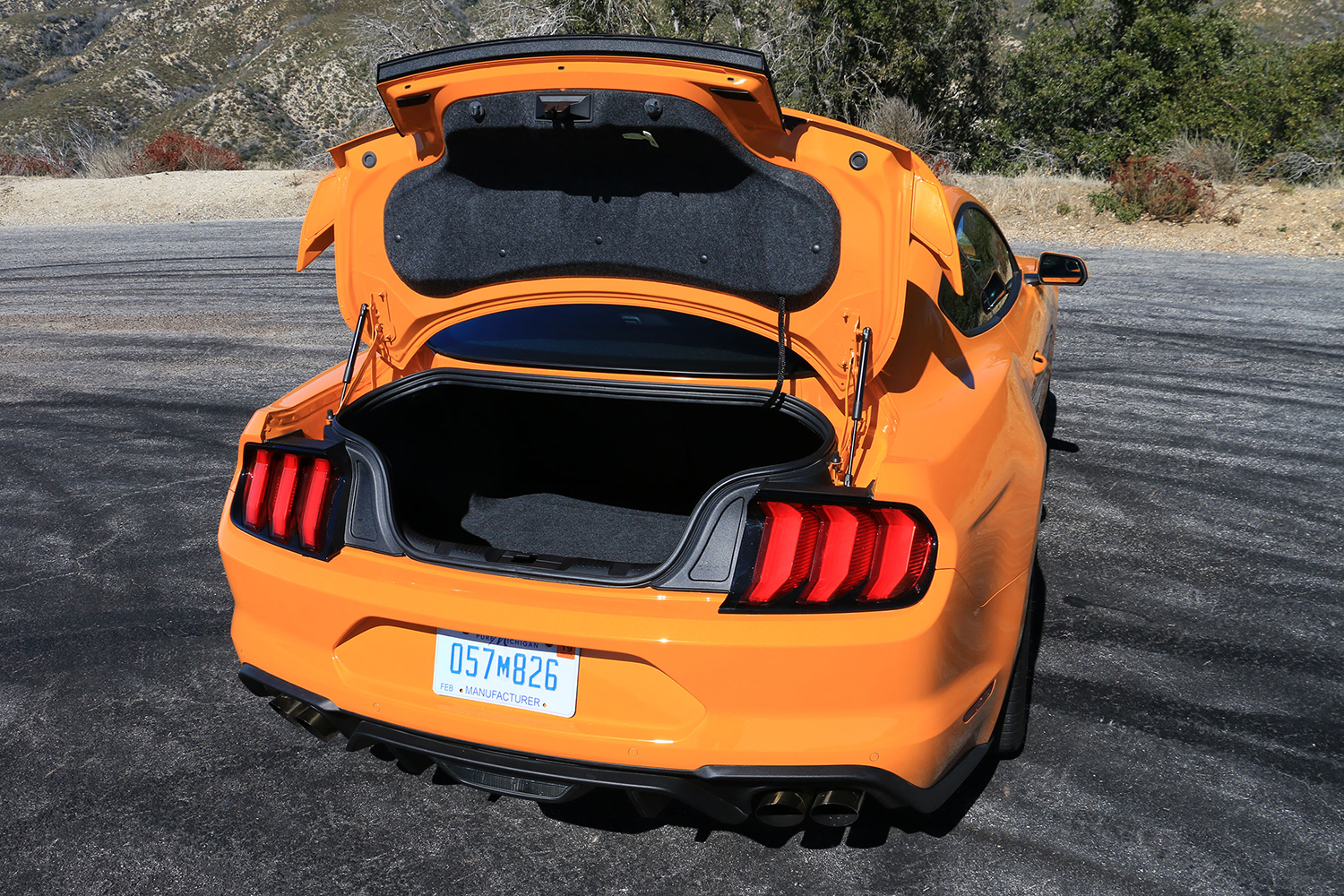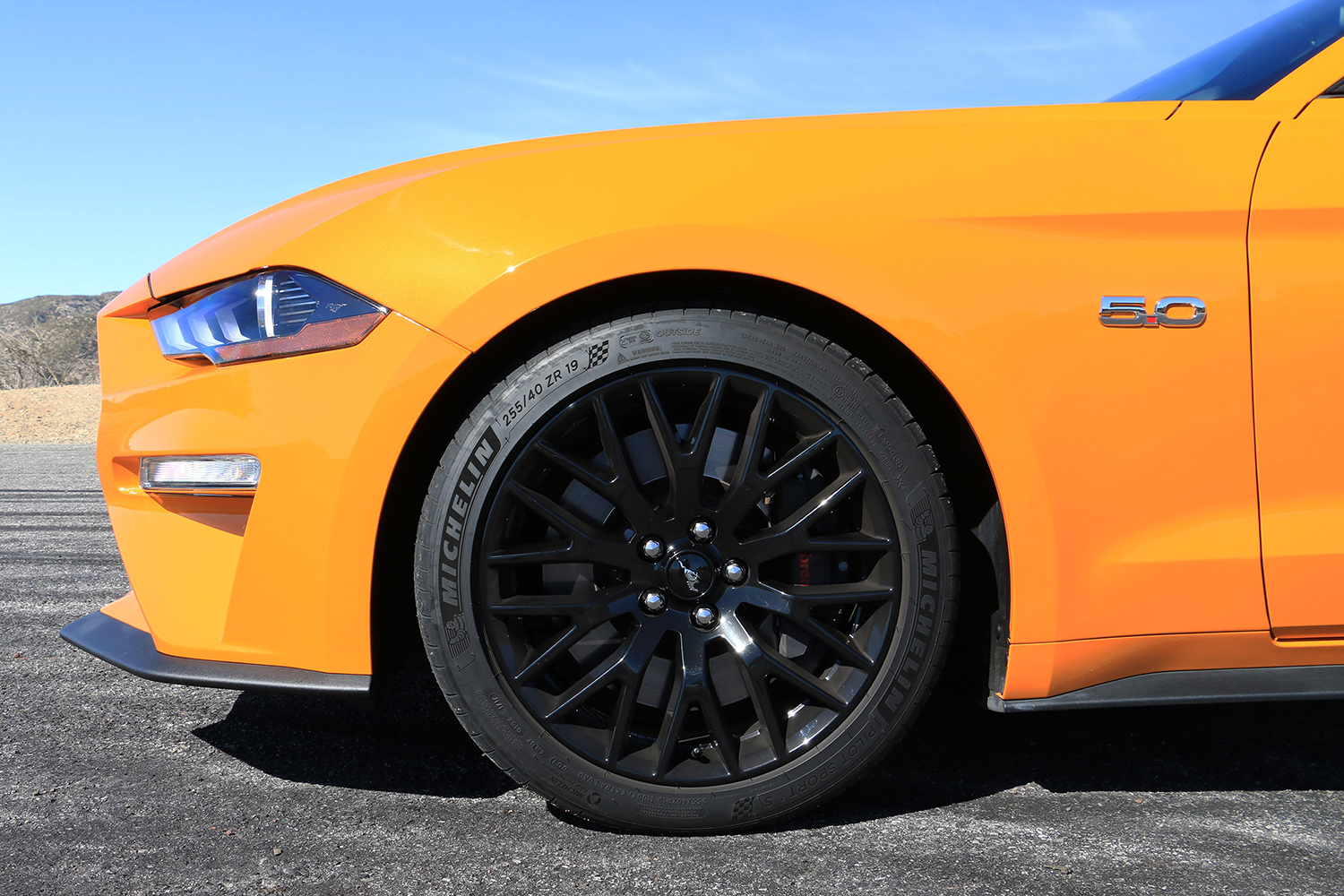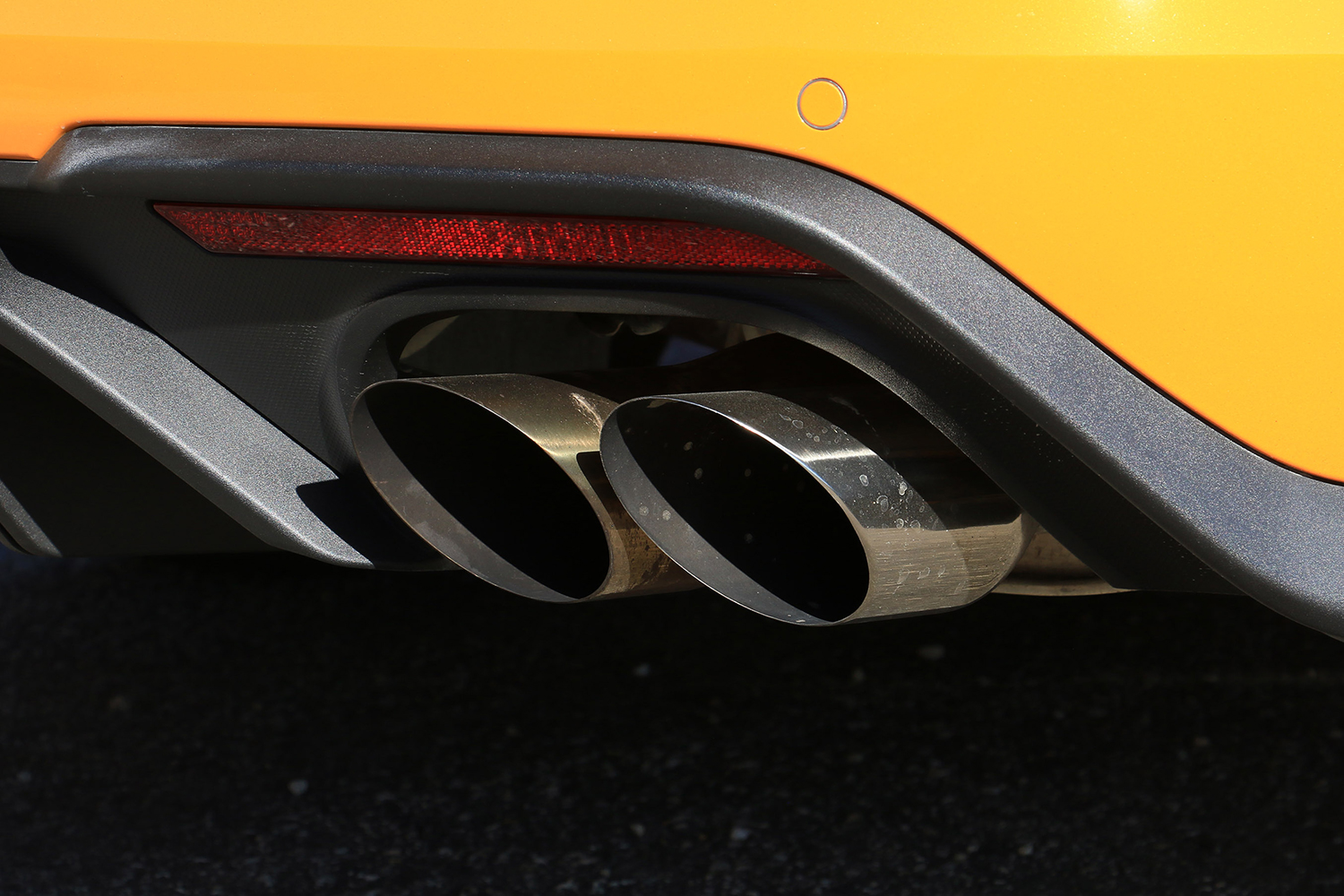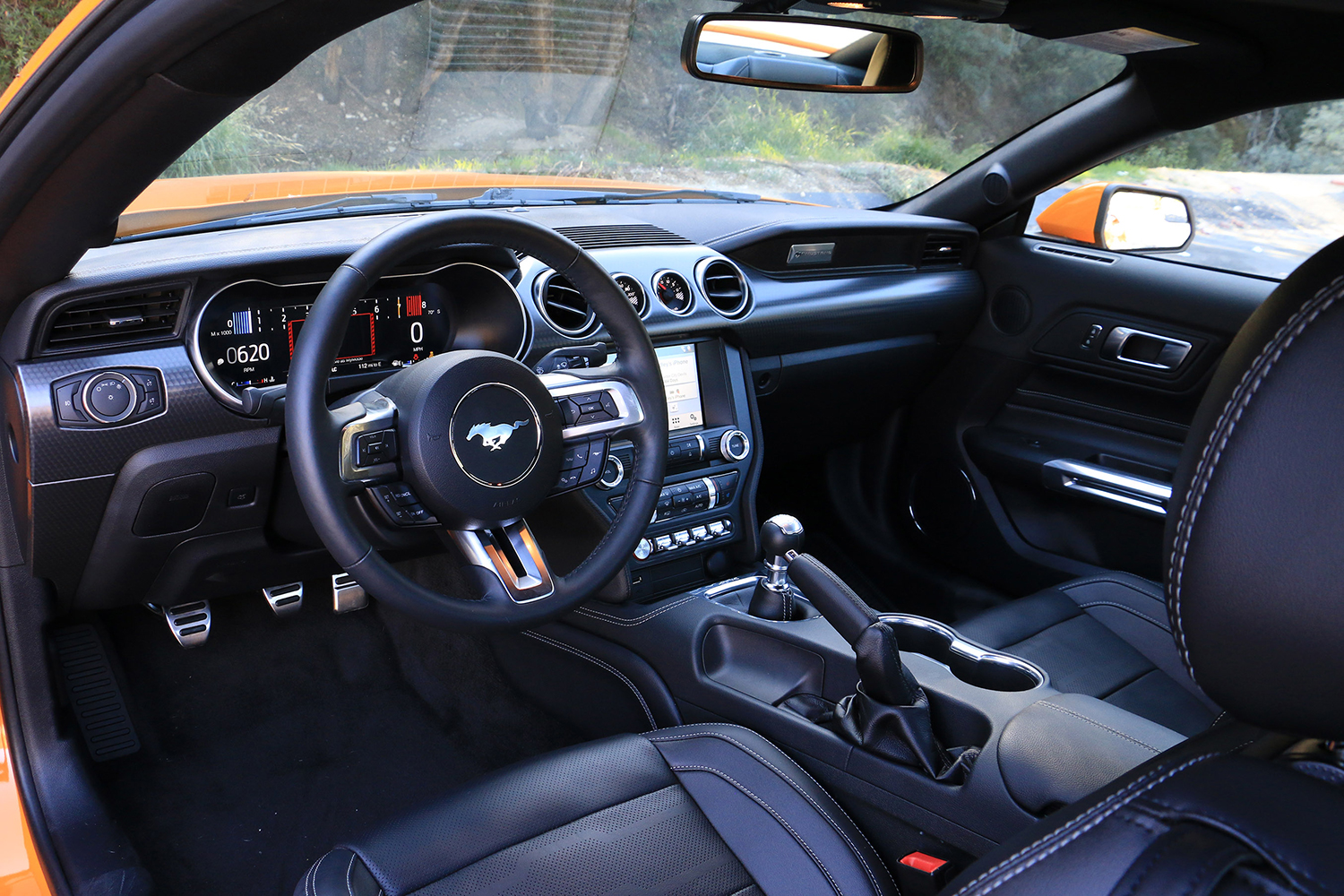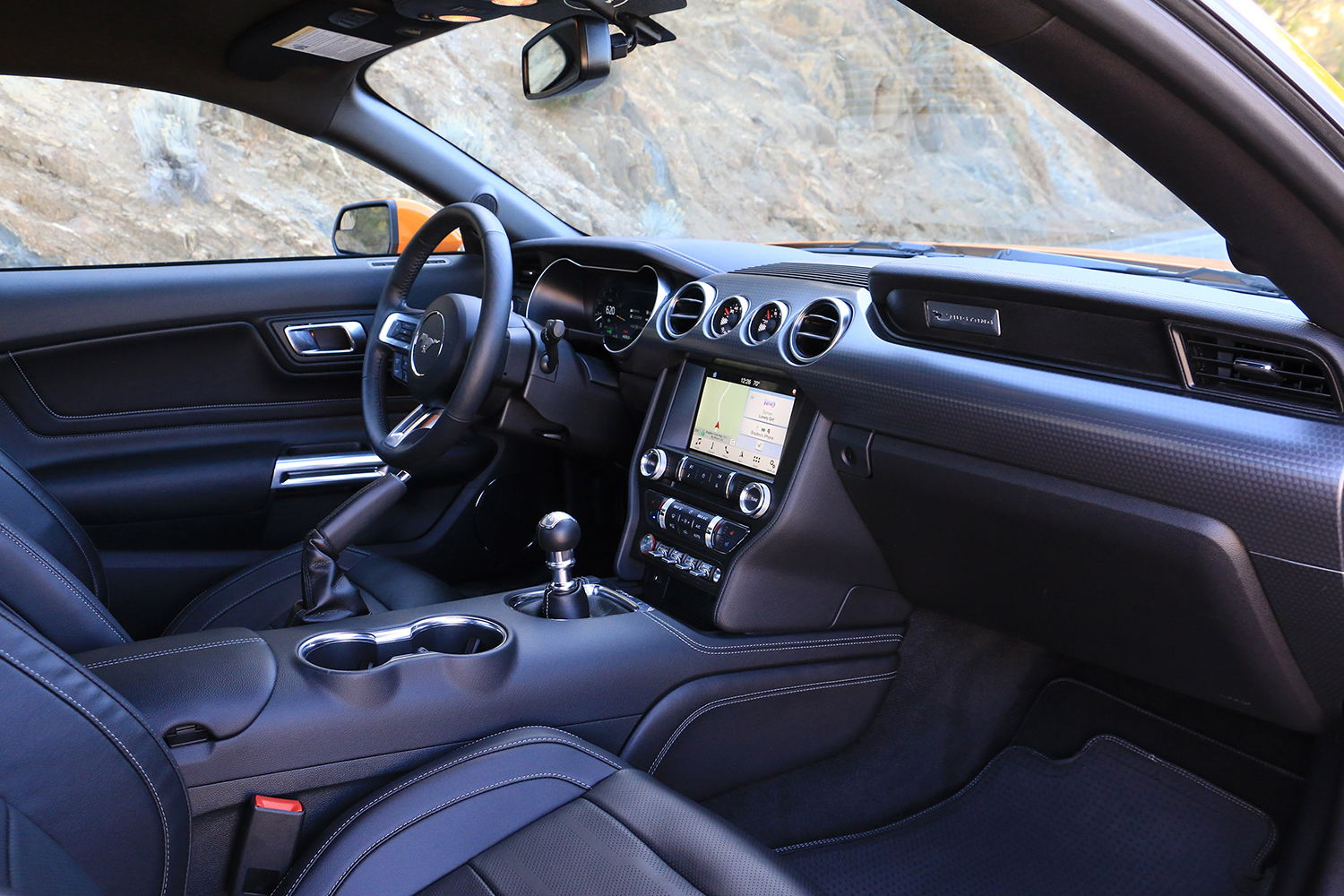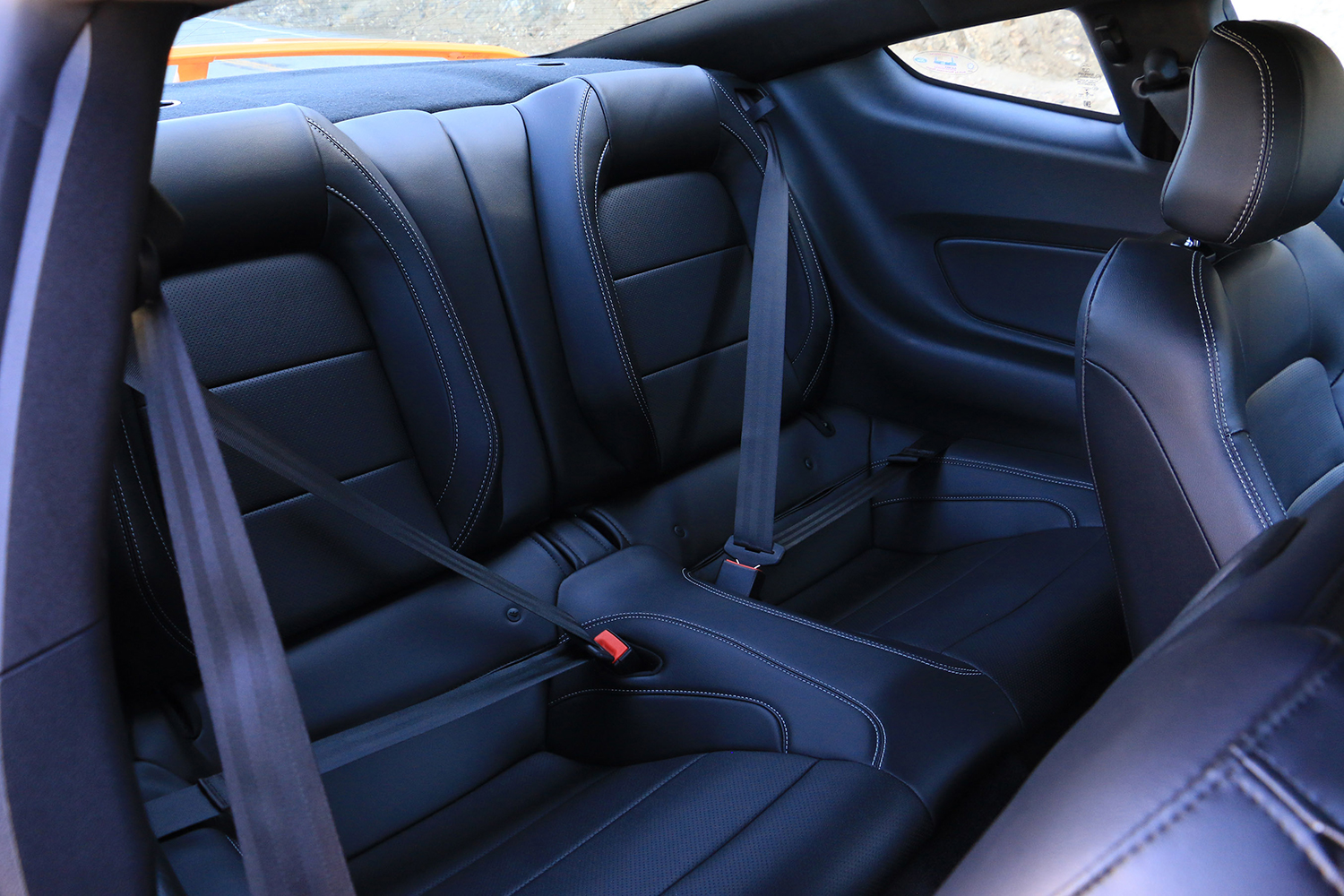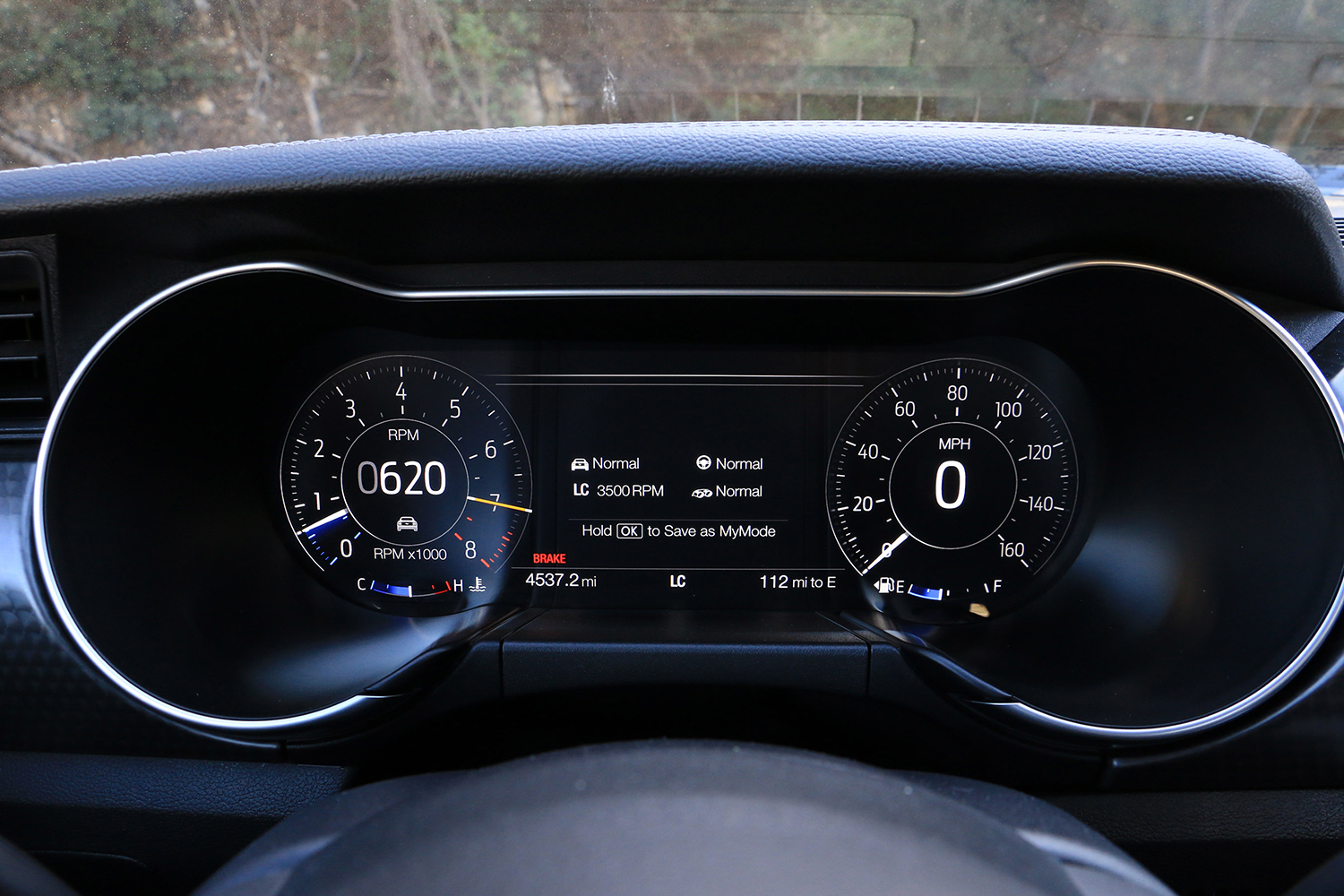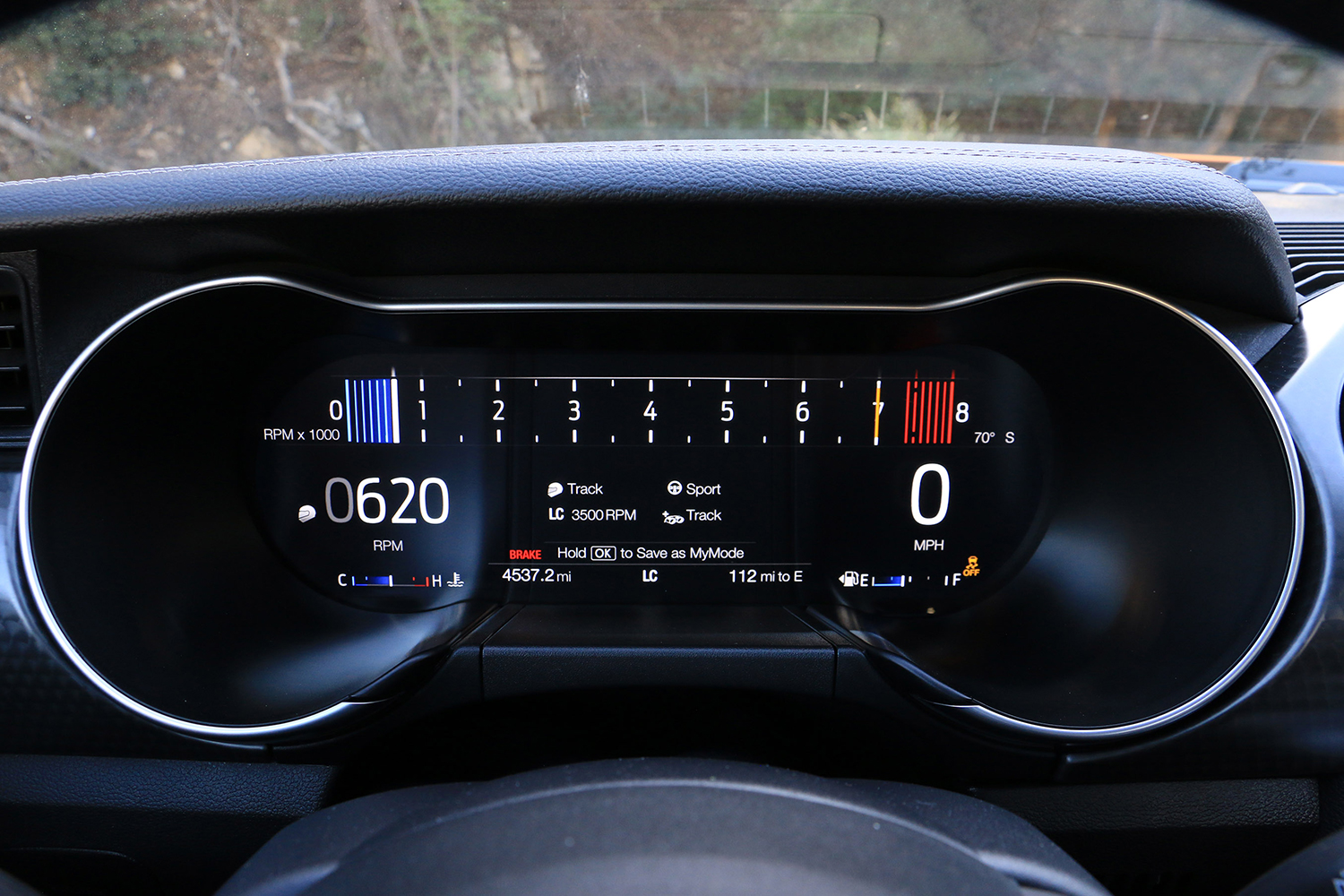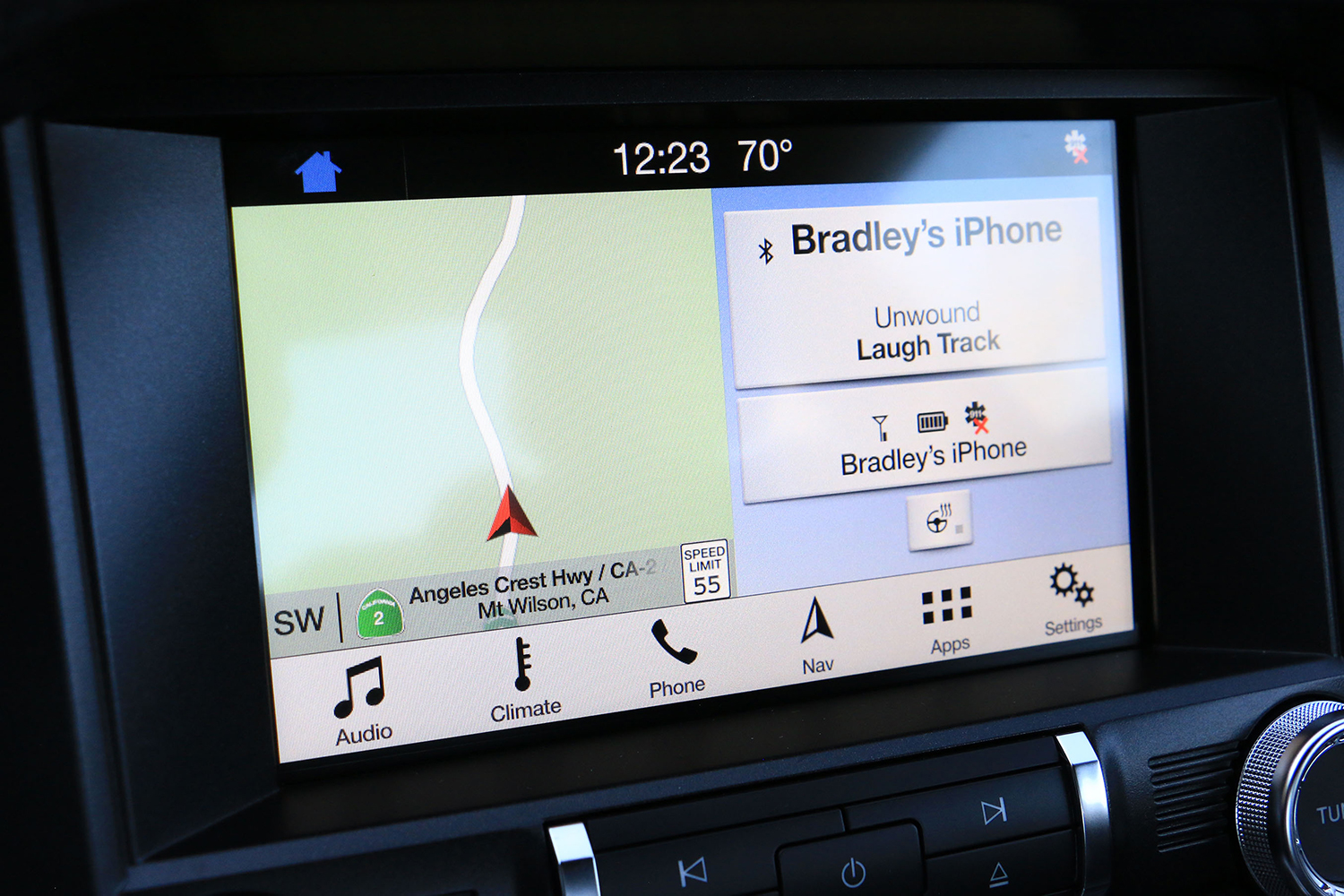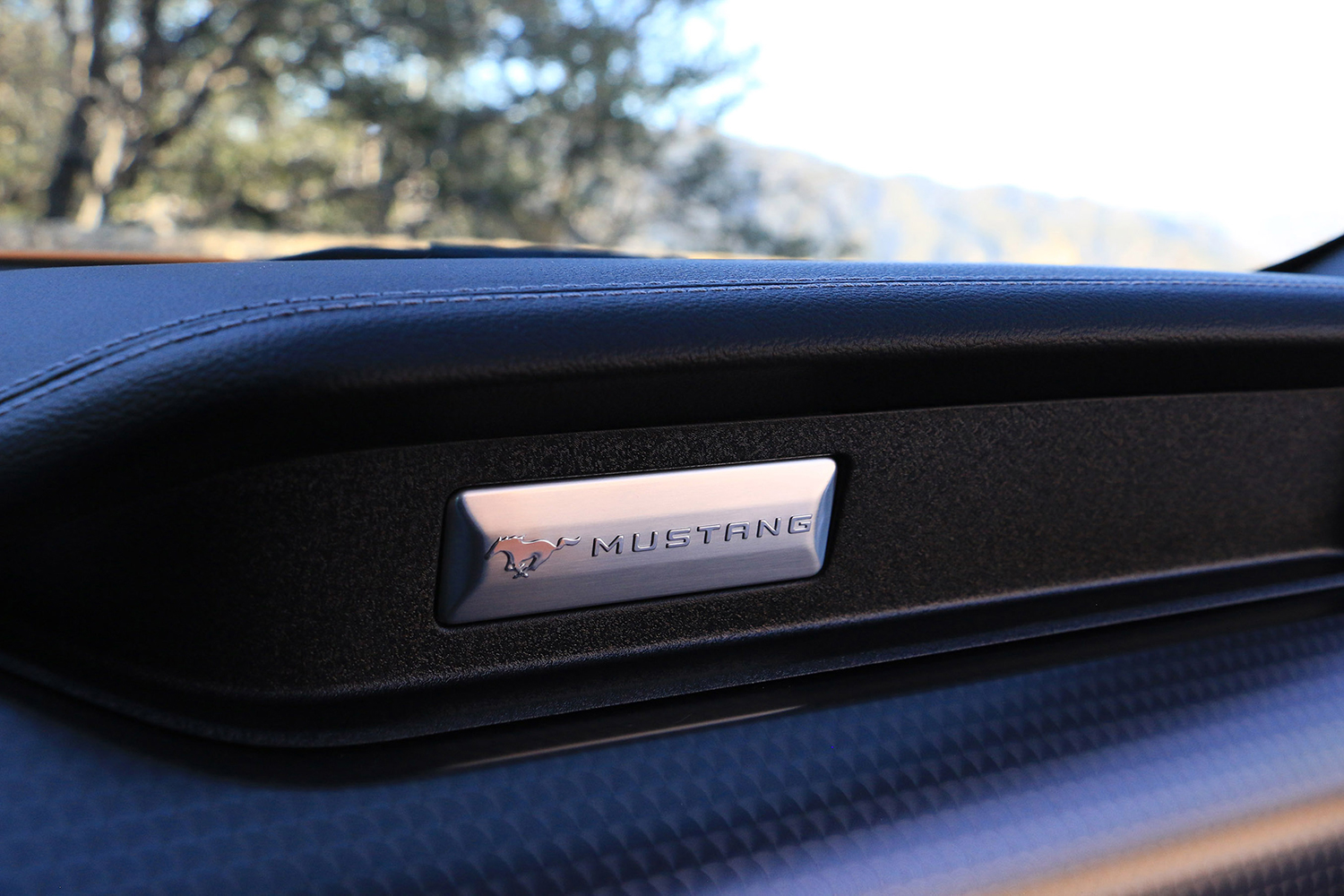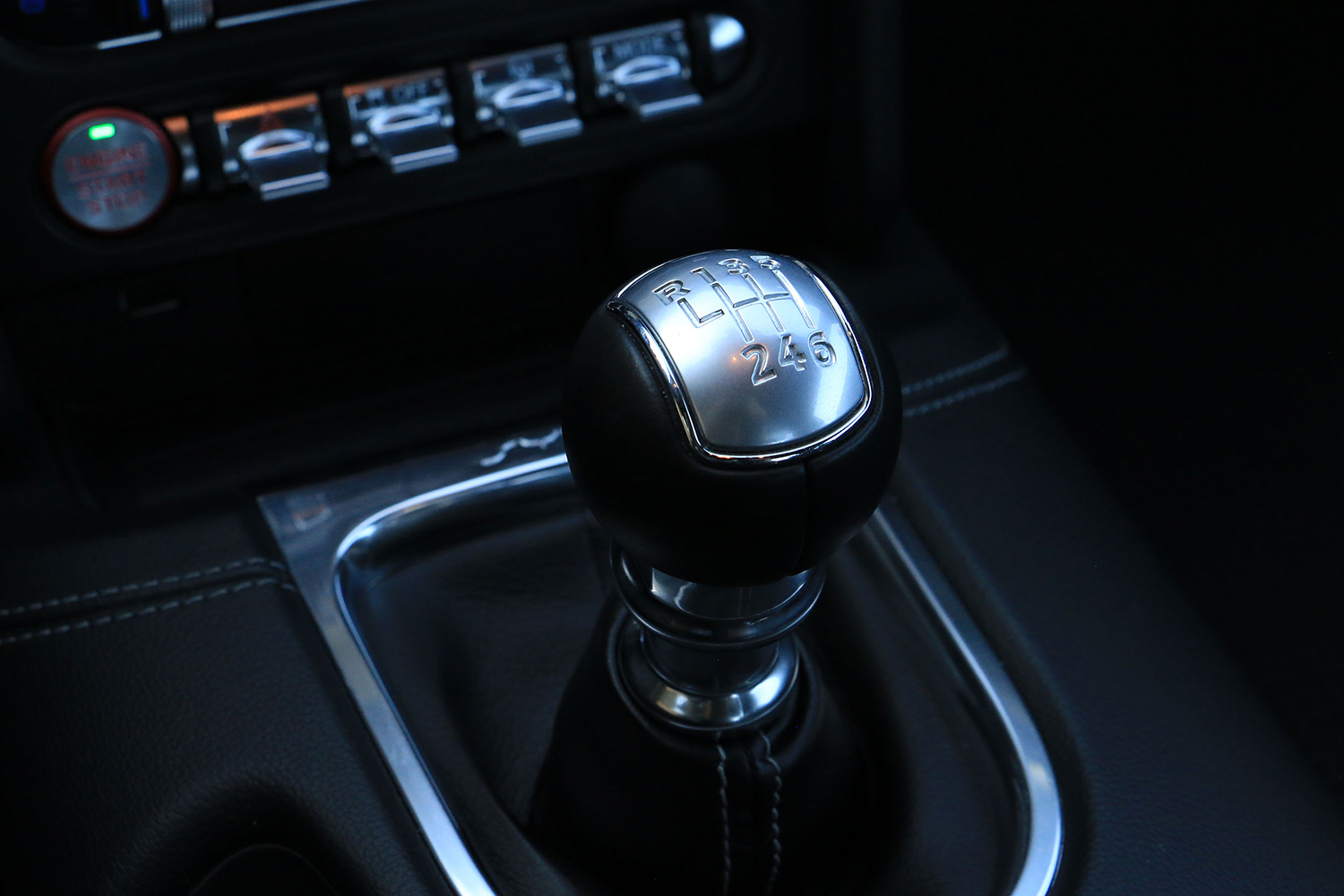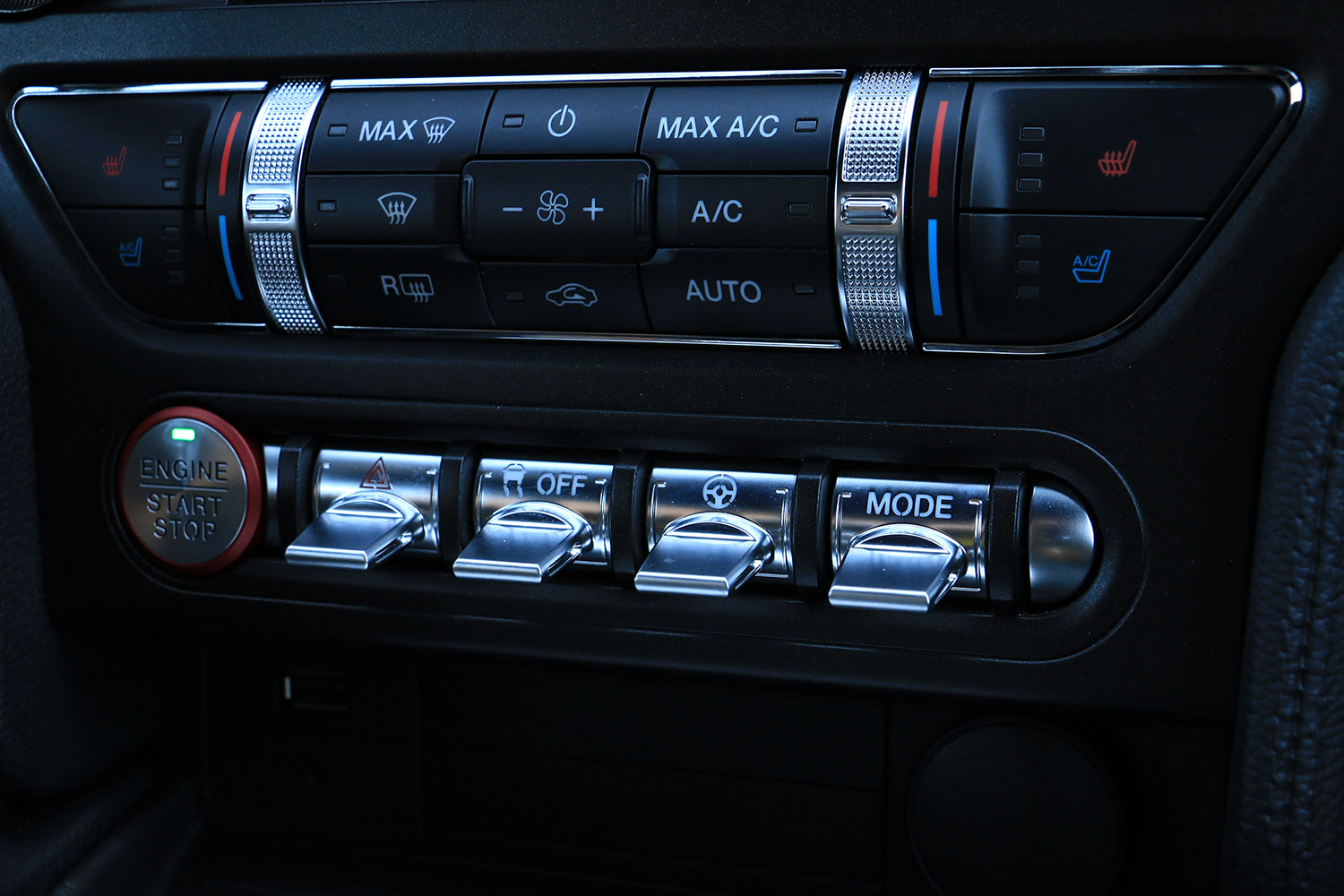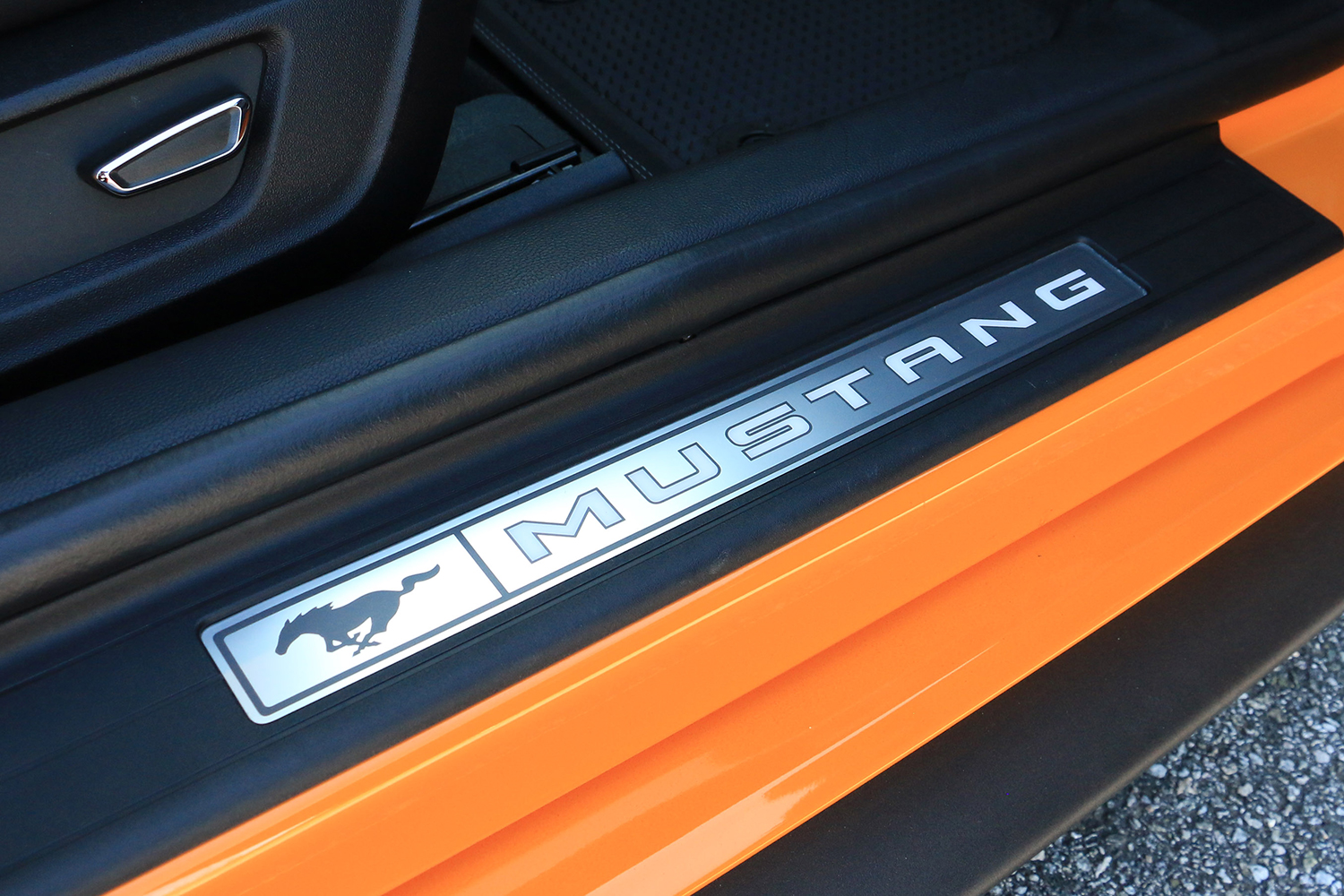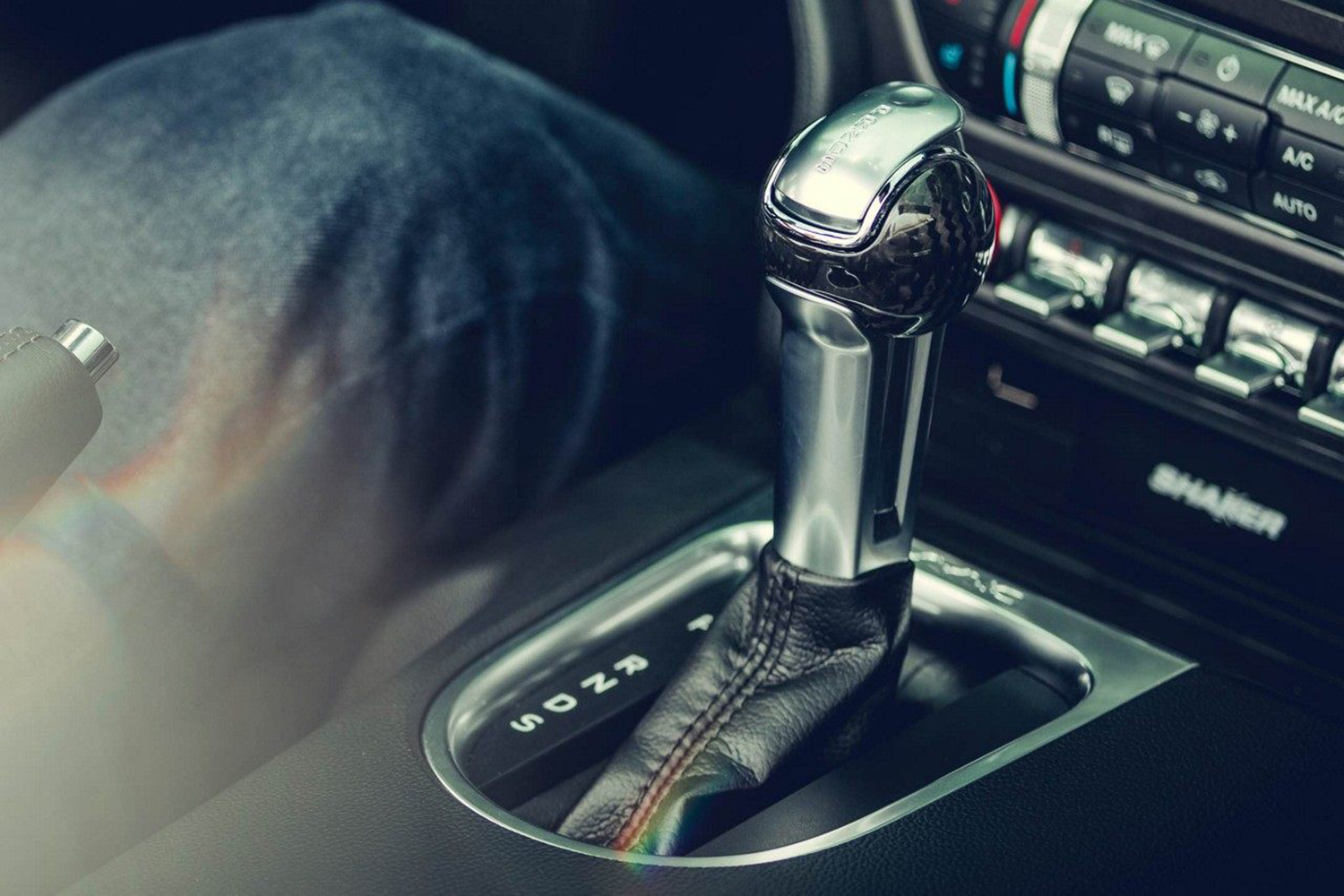Now entering its fourth year on sale, the sixth-generation Mustang represented a significant step forward for Ford’s eminent pony car.
Underpinning its sleek new bodywork was a new platform that incorporated a long-awaited independent rear suspension system which gave the Mustang a newfound sense of poise and refinement out on the road.
After outselling the Chevrolet Camaro and the Dodge Challenger for the third consecutive year, Ford might have been forgiven for not wanting to mess with a good thing. But then again, resting on one’s laurels is rarely the path to segment dominance. With that in mind, the automaker has given the Mustang a thorough going over from top to bottom for this year, incorporating a number of trick tech features that not only enhance its performance, but also its efficiency and drivability.
We snagged the keys to this V8-powered GT, which wears the revised Mustang’s signature Orange Fury paint hue, and headed to the hills to see how these updates work out in the real world. Join us as we look at five key revisions for 2018 that blend horsepower with Ford’s latest tech to make the Mustang GT more capable and user-friendly than ever.
A Suspension for Every Occasion
For the first time ever, both the Mustang GT and entry-level EcoBoost-powered models are available with a magnetorheological suspension system. While the term is a mouthful, Magne-Ride does a lot more than just sound cool on a brochure.
The system can also perform real-time damping adjustments on the fly
With a conventional shock and spring suspension setup, engineers need to find a balance between ride quality and handling manners, and that inevitably translates to compromise in both characteristics.
A system like Magne-Ride addresses that with dampers which contain a fluid that has metallic particles in it. These particles can be magnetized by an electro-magnetic coil controlled by the Magne-Ride system’s software. When that coil magnetizes those particles, it instantaneously changes the viscosity of the damper fluid to change the suspension’s stiffness.
The upshot is that the driver can choose different levels of stiffness depending on drive mode selected (i.e. Normal, Sport, or Track). The system can also perform real-time damping adjustments based on factors like the vehicle speed and driver inputs to make changes on the fly.
That means you can have a soft, comfortable suspension when you’re commuting, and a stiff, performance-focused suspension for flat cornering when you’re at the track or out on a good winding road. It makes the 2018 Mustang GT a much more versatile vehicle, and eliminates much of the compromise that’s inherent to conventional suspension systems.
Loud When You Want it to be, Quiet When You Don’t
Another newly-available feature for the Mustang GT is the active exhaust system. Like the Magne-Ride system, it was first seen on the Shelby GT350 and GT350R models and has now seeped down into the GT. And, much like the Magne-Ride system, it makes the Mustang GT a more flexible machine that’s easier to live with on a day-to-day basis.
For many enthusiasts, the factory exhaust system is the first thing in the dumpster, as its quiet tuning doesn’t really allow the Mustang’s V8 to play its full song. But switching over to a more aggressive exhaust system has compromises of its own, like droning frequencies during long stints on the freeway and potential complaints from your neighbors and the local constabulary.
The Mustang’s active exhaust system relies on electronically-controlled valves to give you the best of both worlds. Those valves provide four different modes for the system that range from the hushed whisper of Quiet mode to the roaring cackle of Track mode, allowing the driver to adjust the exhaust’s volume to taste.
Another cool feature of the system is the ability to program Quiet mode operation during specific hours in the day, allowing Mustang owners to, for instance, fire up their cars in the wee hours of the morning without announcing it to the neighborhood and then uncorking the system at their leisure later on.
More Power, Less Thirst
These days a bump in horsepower is almost obligatory for any Mustang update. For 2018, the changes go for deeper than some tweaks to the engine management software.
The result is a more powerful engine that’s also more environmentally friendly and fuel-efficient.
The GT’s 5.0-liter, naturally-aspirated V8 now makes 460 horsepower and 420 pound-feet of torque, up 25 ponies and 20 lb-ft. from 2017. While that’s great news for enthusiasts, the fact that the engine does so while also delivering improvements to fuel economy and emissions over the outgoing, less powerful engine is perhaps even more impressive.
To get the additional grunt, Ford swapped out a number of key internal engine components for freshly revised units, including the crankshaft, cylinder heads and camshafts. They also punched out the cylinder bores for slightly more displacement, pushing it over the “5.0” mark to 5.035 liters from its previous 4.951-liter figure.
But that’s all pretty straightforward stuff – enthusiasts have been extracting more power from engines with hotter cams and better-flowing cylinder heads since the dawn of hot rodding. What makes the latest Ford 5.0 “Coyote” V8 particularly interesting is the implementation of a dual-feed fuel system. Rather than utilizing a high-pressure direct-injection system, as Chevrolet does with its current V8 engines, or a low-pressure port injection system, as Dodge does with its V8s, Ford is now using both.
New software controls this new dual system, allowing for more precise spark control and fuel delivery that leverages the inherent benefits of each injection system as needed. Direct injection, for instance, allows for better performance and more efficiency, but it’s still hard to manage during cold starts when it comes to emissions. That’s where the port injection system does its work, handling cold start and low RPM engine duties and then handing off the task to the direct injection system once things get up to speed. The result is a more powerful engine that’s also more environmentally friendly and fuel-efficient.
The Dash Goes Digital
One of the most notable changes in the cabin of the 2018 Mustang is the availability of a new 12-inch LCD instrument cluster. When optioned, the new cluster ditches traditional analog gauges in favor of a completely digital display, allowing the data being delivered to the driver to be altered to emphasize different information depending on the situation. More than 2000 hours were spent fine-tuning the display, and Ford says that the system uses nearly one million lines of code to provide its various functions.
Along with the aesthetic improvement, the display offers a level of customization that would not be otherwise possible with a traditional gauge cluster, such as the ability to completely reconfigure the information layout based on the currently-selected drive mode. Track mode, for instance, changes the rev counter from a traditional circular setup on the left side of the screen to a status bar-style line that’s positioned directly in the center of the cluster and moves from left to right as the revolutions go up.
This makes it easier to keep tabs on the engine revolutions while staying focused on the road ahead – particularly handy when you’re moving at triple-digit speeds. The display also shows real-time vehicle telemetry and other performance-related data on other parts of the screen. Each mode has its own configurable setup that puts an emphasis on the data that’s most relevant to that type of driving.
No “Wrong” Transmission
In years past, conventional wisdom dictated that while more convenient and easier in traffic, opting for an automatic over a manual gearbox in a Mustang was a serious blow to both performance and the driving experience overall.
But the 2018 refresh brings with it another crucial update: A new 10-speed automatic transmission. Co-developed with their cross-town rivals at General Motors, this gearbox has already found use in high performance vehicles like the Chevrolet Camaro ZL1 as well as Ford’s own F-150 Raptor, where it has proven its worth with quick ratios and gear shifts faster than any human being could ever hope to muster. It’s also one of the reasons that, when properly equipped, the new Mustang GT will now sprint to from zero to 60 mph in under four seconds.
Of course, there are those among us who would still prefer to row their own, and for them, Ford is happy to equip their Mustang with a six-speed manual gearbox. But with the automatic now offering both greater performance and better fuel economy than its three-pedal alternative, choosing between will now be a more difficult decision than ever.
While the 2018 Mustang refresh may seem like just a power bump and a few visual tweaks at a glance, the technology underlying these updates is some sophisticated stuff. Ford’s efforts here have elevated the pony car to new heights while also bolstering its environmental and social credentials, and that’s a feat worth celebrating.
